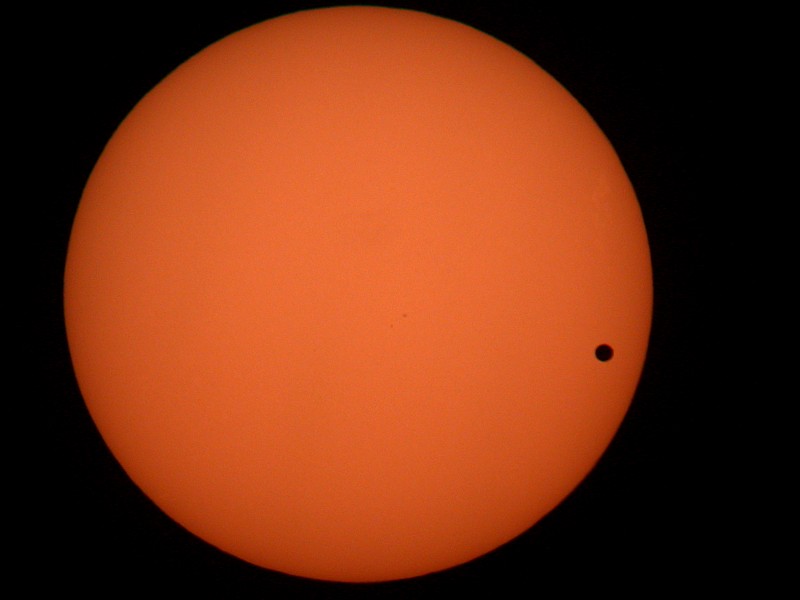
| < |
Home / |
Astronomy / |
Sun / |
Venus Transit 2004 |
> |
|---|
6:53 EDT, an airplane happened to join the transit. 1/270 second, F6, EXP+0.3, f8.2mm, ISO 200, white balance cloudy. All images on this page are taken with Baader Astrosolar filter, Celestron star hopper 8"/f6 Dob, Scopetronix 18mm eyepiece/adapter, Nikon coolpix 995 digital camera. From Green Tree, Pittsburgh, PA, USA.
 |
| Double Transit. This photo appeared on the front page of 2004/6/9's Pittsburgh Post Gazette. |
A faint ring of light (aureole) can be seen surronding the dark part of Venus, evidence that Venus has an atmosphere. Some interesting observations:
1. The ring of light is most visible when most of Venus is still within the disc of the Sun;
2. The lower half of the ring is brighter than the upper half.
The photos were intentionally over-exposed to bring out the ring of light.
Figure 1--4: The ring of light is most evident immediately after the third contact. And the lower half of the ring is more prominent.
Figure 1: 7:07 EDT. 1/15 second, F3.8, f19.1mm, ISO 200, white balance cloudy
Figure 2: 7:08 EDT. F3.8, f19.1mm, ISO 200.
Figure 3: 7:08 EDT. F3.3, f15.0mm, ISO 200.
Figure 4: 7:09 EDT. F3.3, f15.0mm, ISO 200.
![[Figure 1,2,3,4] The ring of light (aureole) shows Venus has an atmosphere](../images/sun/zhuvt2.jpg) |
| [Figure 1,2,3,4] The ring of light (aureole) shows Venus has an atmosphere |
![[Figure 5,6,7,8] The ring of light gradually disappears as Venus moves out.](../images/sun/zhuvt5.jpg) |
| [Figure 5,6,7,8] The ring of light gradually disappears as Venus moves out. |
![[Figure 9,10,11,12] The ring of light disappeared after Venus is half way out.](../images/sun/zhuvt6.jpg) |
| [Figure 9,10,11,12] The ring of light disappeared after Venus is half way out. |
Third contact. No obvious 'black drop'. Composite of six photos. 7:04 -- 7:06 EDT. 1/125 second, F5.1, f31mm, ISO 200, white balance cloudy.
 |
| Contact III |
Venus Transit 2004/6/8 6:27 EDT. 1/177 second, F3.7, f8.2mm, ISO 200, white balance cloudy.
 |
| Venus Transit 2004/6/8 6:27 EDT. |
 |
| Telescope Setting |
| < |
Home / |
Astronomy / |
Sun / |
Venus Transit 2004 |
> |
|---|